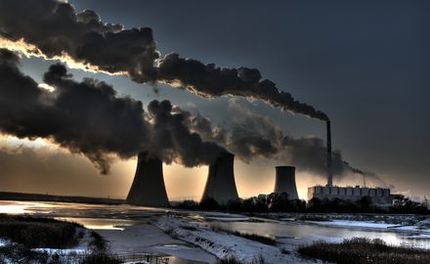New roadmap explores technologies that improve chemical industry energy use, emissions intensity
The IEA, ICCA and DECHEMA jointly released today their new roadmap that explores how the chemical industry can further amplify catalysis and other related technology advances to boost energy efficiency in its production processes.
Entitled Technology Roadmap: Energy and GHG Reductions in the Chemical Industry via Catalytic Processes, the report looks at measures needed from the chemical industry, policymakers, investors and academia to achieve the full potential of catalysis for high-volume processes worldwide. The report details the potential impact of continuous improvements, best practices, emerging technologies, and breakthrough advances to cut energy use in 2050 by 13 exajoules and bring down greenhouse gas (GHG) emission rates by 1 gigatonne of CO2 equivalent.
Around 90 per cent of chemical processes involve the use of catalysts – such as added substances that increase the rate of reaction without being consumed by it – and related processes to enhance production efficiency and reduce energy use, thereby curtailing GHG emission levels.
Maria van der Hoeven, IEA Executive Director said: “Energy efficiency is the ‘hidden’ fuel that not only reduces consumption but also mitigates threats of energy security from climate change. This roadmap shows the necessary steps the global chemical industry and governments can take to save in 2050 what Germany uses in primary energy and emits in GHG currently.”
The report calls on policymakers to start developing and implementing policies that bestow greater reward for energy efficiency investments and remove barriers for new investments. A long-term policy framework should be created that encourages investments to reinvigorate catalyst and process improvement and R&D for high-energy consuming processes. Energy subsidies that thwart use of energy efficient technology should be stopped, the report recommends.
The report urges better link-up between financial institutions and chemical industries to meet the pressing need for funding during the transition to and upon reaching a lower-carbon business model. The roadmap outlines a clear need for global and regional co-operation on reducing energy and related emissions via industry associations.
Yoshimitsu Kobayashi, who leads energy and climate change efforts at the International Council of Chemical Associations, added: “Among the thousands of chemicals produced each year, 18 of them account for 80 per cent of energy demand in the chemical industry and 75 per cent of greenhouse gas emissions. It is a reality that the industry has made substantial efficiency improvements for this small group of chemicals, but going to the next level for all chemical products will require further development and deployment of emerging technologies.”
Sustainable biomass feedstocks and hydrogen from renewable energy sources offer additional greenhouse gas savings, according to the paper. The challenge for both is the long-term R&D needed to bring down the amount of energy consumed, to harness this technology for broad use.
Rainer Diercks, Chairman of DECHEMA e.V. added: “Catalysis is a key technology of the Chemical Industry. Academia and research organisations over the next 10 years must stimulate academic and national laboratory research on large-volume, high energy use catalytic processes. There must be join-up with the Chemical Industry to flesh out top prospects for reducing the technical barriers that scupper scale-up of game changer technologies.”
Other news from the department business & finance

Get the chemical industry in your inbox
By submitting this form you agree that LUMITOS AG will send you the newsletter(s) selected above by email. Your data will not be passed on to third parties. Your data will be stored and processed in accordance with our data protection regulations. LUMITOS may contact you by email for the purpose of advertising or market and opinion surveys. You can revoke your consent at any time without giving reasons to LUMITOS AG, Ernst-Augustin-Str. 2, 12489 Berlin, Germany or by e-mail at revoke@lumitos.com with effect for the future. In addition, each email contains a link to unsubscribe from the corresponding newsletter.



























































